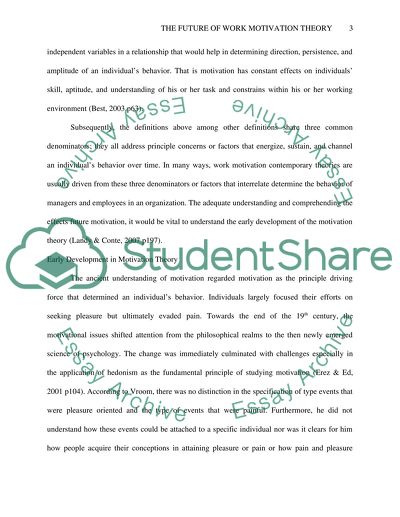Cite this document
(“The future of work motivation theory Essay Example | Topics and Well Written Essays - 1500 words”, n.d.)
The future of work motivation theory Essay Example | Topics and Well Written Essays - 1500 words. Retrieved from https://studentshare.org/literature/1438203-the-future-of-work-motivation-theory
The future of work motivation theory Essay Example | Topics and Well Written Essays - 1500 words. Retrieved from https://studentshare.org/literature/1438203-the-future-of-work-motivation-theory
(The Future of Work Motivation Theory Essay Example | Topics and Well Written Essays - 1500 Words)
The Future of Work Motivation Theory Essay Example | Topics and Well Written Essays - 1500 Words. https://studentshare.org/literature/1438203-the-future-of-work-motivation-theory.
The Future of Work Motivation Theory Essay Example | Topics and Well Written Essays - 1500 Words. https://studentshare.org/literature/1438203-the-future-of-work-motivation-theory.
“The Future of Work Motivation Theory Essay Example | Topics and Well Written Essays - 1500 Words”, n.d. https://studentshare.org/literature/1438203-the-future-of-work-motivation-theory.


